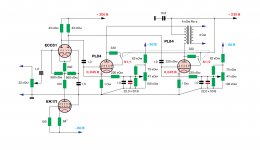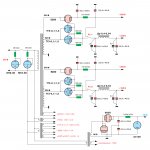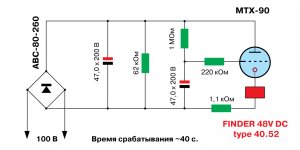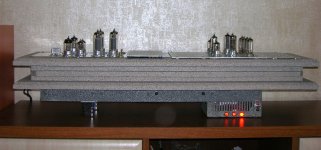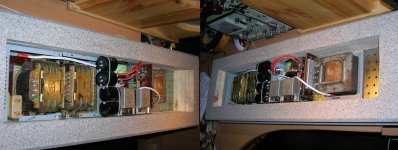El86
in germany we have an old saying, tranlsated, looks similar like this: who ever makes a measurement marks down its own measuremet errors and misunderstandings of his / her doings.
btw.: agressive language belongs not into our forum, as i built since 1958 these things with tubes. an amplifier for audio is a rather simple thing compred to others projects.........
in germany we have an old saying, tranlsated, looks similar like this: who ever makes a measurement marks down its own measuremet errors and misunderstandings of his / her doings.
btw.: agressive language belongs not into our forum, as i built since 1958 these things with tubes. an amplifier for audio is a rather simple thing compred to others projects.........
in germany we have an old saying, tranlsated, looks similar like this: who ever makes a measurement marks down its own measuremet errors and misunderstandings of his / her doings.
Exactly why I say to build it... My results were obtained in AB1, Va = 290V, Vg2 = 275V, 3300 ohms A-A load.
Final HiFi design was 280V Va, 250Vreg Vg2 and 3200 ohm load and still got 20W clean.
btw.: agressive language belongs not into our forum, as i built since 1958 these things with tubes. an amplifier for audio is a rather simple thing compred to others projects.........
Who here was being agressive? The mods must have missed it 😕
Cheers!
2 x PL84 will deliver 20 watts clean and 28 watts peak into a 3200 ohm P-P load.
Can you give us more details, like plate and screen supply? Thanks!
Can you give us more details, like plate and screen supply? Thanks!
Look in my post right above yours 😀
Cheers!
Oh... do watch out if you're using Ei tubes.... they will go nuclear with Va or Vg2 anywhere a hair above 250V... I learned the hard way and turned my matched quad into a matched pair 
The toughest ones so far for Va tolerance:
- National (IIRC they rebranded... GE? RCA?)
- Telefunken
- Various 6/10/15CW5 USA TV tubes
Cheres!

The toughest ones so far for Va tolerance:
- National (IIRC they rebranded... GE? RCA?)
- Telefunken
- Various 6/10/15CW5 USA TV tubes
Cheres!
Great tip, I think I'll get some RSD (probably from the same factory as Ge, someone told me)... were they German or Czec? Thanks a lot for your support!
I recently accidently bought some PL 84 tubes. Does anyone have a schematic
for an amplifier using these tubes?
hi guys:
Had the same accident very recently 😀 (NOS siemens + 3 used Telefunken), any chance for a EL86 single ended schematic?
wrong! bananas are almost like lemons! different operational conditions! different output transformer. please a bit more accuracy in the statements.. a 6l6 is almost the same as an kt88 bcc. similar glass envelope.....
yeah, it's closer to EL86, where are you in CN?
There is my new DIY amp. Great sound both in triode and pentode mode. Thyratrons are used in PSU for the output stages.I recently accidently bought some PL 84 tubes. Does anyone have a schematic
for an amplifier using these tubes?
Attachments
Last edited:
So the TG3s are functioning as half-wave rectifiers in this power supply? Please explain. Are they self-triggering because of the 100K grid shunt resistance? How predictable is the trigger threshold? What is the reason for including switch P1?
Hello, everybody!
Thyratrons feature the following.
Pros:
- very low plate (i.e. inner) resistance vs. kenotrons
- constant voltage drop (11 volts on TG3-0.1/1.3)
as a result the amplifier in class AB receives stable power from PSU, contrary to kenotron rectification where the voltage drop on kenotron varies along the variable anode current of the output tubes (in class AB)
Cons:
- thyratrons require a delay (specific for each type) when filaments becomes completely hot before the rectifying voltage is applied; otherwise the cathodes of thyratrons lose the emission after about a hundred of switching on.
So when the amp is powered on kenotrons EZ80 start to charge the filter capacitors and slowly provide power to the schematic; in 40 seconds the output stages (PL84) are switched to the power from thyratrons with already hot filaments; the phase splitter stages at that continue to be powered from EZ80.
As a results I’ve got here a great energy of sound especially in bass and especially in high volume.
P.S. I’ve tried different types of thyratrones (including RCA 2050) in several PP amplifiers and in my opinion they are a good option for PSU.
Thanks a lot!Hmmmm!
Very unusual style for chassis. I like.
Congrats.
Yes. The thyratrons are functioning as half-wave rectifiers here. And are self-triggering because of 100k grid shunt resistors (and grid 2 couplet to cathode).So the TG3s are functioning as half-wave rectifiers in this power supply? Please explain. Are they self-triggering because of the 100K grid shunt resistance? How predictable is the trigger threshold? What is the reason for including switch P1?
Thyratrons feature the following.
Pros:
- very low plate (i.e. inner) resistance vs. kenotrons
- constant voltage drop (11 volts on TG3-0.1/1.3)
as a result the amplifier in class AB receives stable power from PSU, contrary to kenotron rectification where the voltage drop on kenotron varies along the variable anode current of the output tubes (in class AB)
Cons:
- thyratrons require a delay (specific for each type) when filaments becomes completely hot before the rectifying voltage is applied; otherwise the cathodes of thyratrons lose the emission after about a hundred of switching on.
So when the amp is powered on kenotrons EZ80 start to charge the filter capacitors and slowly provide power to the schematic; in 40 seconds the output stages (PL84) are switched to the power from thyratrons with already hot filaments; the phase splitter stages at that continue to be powered from EZ80.
As a results I’ve got here a great energy of sound especially in bass and especially in high volume.
P.S. I’ve tried different types of thyratrones (including RCA 2050) in several PP amplifiers and in my opinion they are a good option for PSU.
- Status
- Not open for further replies.
- Home
- Amplifiers
- Tubes / Valves
- PL84 tubes
